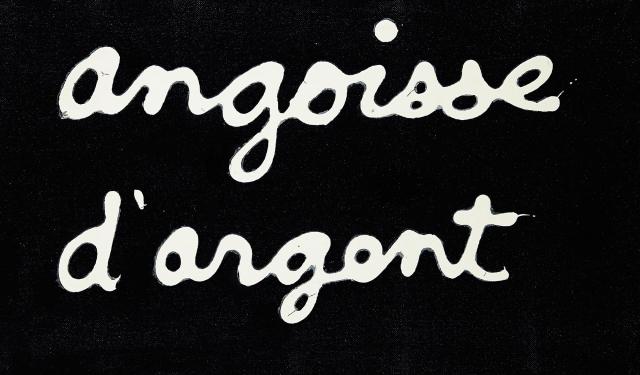An heir of Dadaism and Surrealism, aligning closely with the preoccupations of both the new realists and Fluxus in their desire to merge art and life, Ben Vautier is also influenced by Isidore Isou’s lettrism of the mid-1940s. This avant-garde movement involving both poetry and painting – and viewed as a surpassing of figurative plastic art and abstract art – has had a lasting influence on his work.
While lettrist art is based on the purely formal organization of letters and characters devoid of semantic content, Ben expresses his creativity through words and their meaning. His modestly formatted paintings on canvas, which remind one of schoolchildren’s blackboards, are covered with thickly painted, cursive, childish handwriting that sometimes goes as far as ignoring the rules of syntax and spelling.
These paintings stand outside of any traditional art form, representing nothing beyond what can be read on them. Playing with the work’s ontological status, Ben lets it speak for itself, saying straight out: “I want money buy me 3000 F”. He explores the question of the painting’s utterance, the answer to which is sometimes found between the words, or simply does not exist (Pas de solution / No solution, 1991). In a spirit sometimes tinged with both provocation and irony, each message is something of a maxim in which everyone can recognize themselves (Angoisse d’argent / Money Worries, 1986).
His practice stems from a desire to not only poeticize life through writing, but also trivialize art to an extreme, to the point of saturating our visual world. In multiplying the derived (mainly scholastic) products, his now-iconic signature causes the work of art to shift into a commercial world, while making it accessible to everyone. In so doing, he also contributes to the destruction of art, which he loudly proclaimed in 1963: “I the undersigned Ben Vautier declare that an authentic work of art is: the absence of art”.
While lettrist art is based on the purely formal organization of letters and characters devoid of semantic content, Ben expresses his creativity through words and their meaning. His modestly formatted paintings on canvas, which remind one of schoolchildren’s blackboards, are covered with thickly painted, cursive, childish handwriting that sometimes goes as far as ignoring the rules of syntax and spelling.
These paintings stand outside of any traditional art form, representing nothing beyond what can be read on them. Playing with the work’s ontological status, Ben lets it speak for itself, saying straight out: “I want money buy me 3000 F”. He explores the question of the painting’s utterance, the answer to which is sometimes found between the words, or simply does not exist (Pas de solution / No solution, 1991). In a spirit sometimes tinged with both provocation and irony, each message is something of a maxim in which everyone can recognize themselves (Angoisse d’argent / Money Worries, 1986).
His practice stems from a desire to not only poeticize life through writing, but also trivialize art to an extreme, to the point of saturating our visual world. In multiplying the derived (mainly scholastic) products, his now-iconic signature causes the work of art to shift into a commercial world, while making it accessible to everyone. In so doing, he also contributes to the destruction of art, which he loudly proclaimed in 1963: “I the undersigned Ben Vautier declare that an authentic work of art is: the absence of art”.
